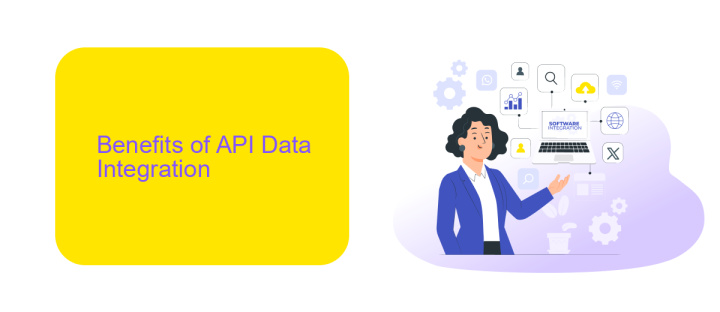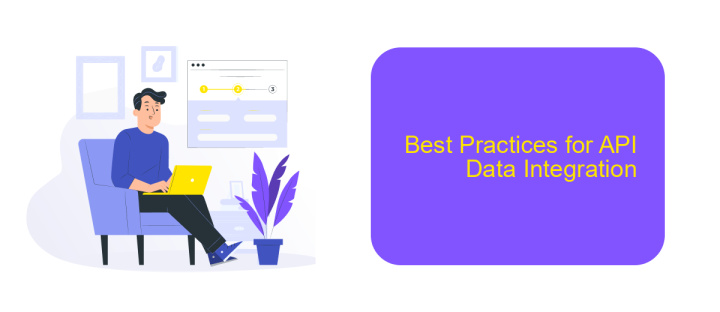API Data Integration
API data integration is revolutionizing the way businesses operate by enabling seamless communication between disparate systems. This technology allows organizations to streamline processes, enhance data accuracy, and improve overall efficiency. By leveraging APIs, companies can easily integrate various software applications, ensuring real-time data exchange and fostering innovation. In this article, we will explore the benefits, challenges, and best practices for successful API data integration.
Introduction
API Data Integration has become a cornerstone for modern businesses, enabling seamless communication between diverse systems and applications. By leveraging APIs, organizations can automate workflows, enhance data accuracy, and improve overall efficiency. This integration is crucial for maintaining competitiveness in today's fast-paced digital landscape.
- Automated data synchronization
- Enhanced data accuracy and consistency
- Improved operational efficiency
- Real-time data access
- Scalable solutions for growing businesses
One of the effective tools for setting up API data integrations is ApiX-Drive. This service simplifies the integration process, allowing businesses to connect various applications without the need for extensive coding knowledge. With ApiX-Drive, companies can quickly and efficiently automate their data flows, ensuring that all systems work harmoniously together. This not only saves time but also reduces the risk of human error, making it an invaluable asset for any organization looking to streamline its operations.
Benefits of API Data Integration

API data integration offers numerous benefits, including enhanced efficiency and accuracy in data management. By automating data exchange between different systems, businesses can reduce manual data entry, minimizing human errors and saving valuable time. This seamless data flow ensures that all departments have access to the most up-to-date information, fostering better decision-making and operational efficiency.
Moreover, API data integration provides scalability and flexibility, allowing businesses to easily adapt to changing needs and incorporate new applications without significant disruptions. Services like ApiX-Drive simplify the integration process, offering user-friendly tools to connect various platforms effortlessly. This enables organizations to focus on their core activities while maintaining a cohesive and integrated data environment. Overall, API data integration is a strategic investment that drives productivity, accuracy, and agility in today's fast-paced business landscape.
Challenges of API Data Integration

API data integration presents several challenges that organizations must navigate to ensure seamless data flow and system interoperability. These challenges can hinder the efficiency and reliability of data exchanges, impacting overall business operations.
- Data Security: Ensuring the security of data as it moves between systems is paramount. APIs can be vulnerable to attacks if not properly secured, leading to potential data breaches.
- Data Consistency: Maintaining data consistency across different systems can be difficult, especially when dealing with real-time data updates. Inconsistent data can lead to errors and misinformed decision-making.
- Scalability: As businesses grow, their data integration needs also expand. Ensuring that APIs can handle increased loads without performance degradation is crucial.
- Compatibility: Different systems may use varying data formats and protocols, making integration complex. Ensuring compatibility between these systems requires careful planning and implementation.
- Maintenance: APIs require ongoing maintenance and updates to keep up with changes in the integrated systems. This can be resource-intensive and requires continuous monitoring.
Services like ApiX-Drive can help mitigate these challenges by providing tools for seamless API integration, ensuring data security, consistency, and scalability. By leveraging such platforms, organizations can streamline their data integration processes, allowing for more efficient and reliable data exchanges.
Best Practices for API Data Integration

Effective API data integration is crucial for seamless data flow between various systems and applications. To ensure a successful integration, it is essential to follow best practices that enhance reliability, security, and efficiency.
Firstly, always use secure authentication methods like OAuth2 to protect your data. Secondly, ensure that your API requests are idempotent, meaning that multiple identical requests should have the same effect as a single request. This prevents data inconsistencies. Thirdly, handle errors gracefully by implementing robust error-handling mechanisms and retry logic.
- Utilize versioning to manage API changes without disrupting existing integrations.
- Limit data exposure by using appropriate filtering and pagination techniques.
- Monitor API usage and performance to identify and address bottlenecks promptly.
- Document your API thoroughly to facilitate easier integration and troubleshooting.
For streamlined API data integration, consider using services like ApiX-Drive. It offers a user-friendly platform that simplifies the setup and management of API integrations, ensuring that your data flows smoothly and securely between systems. By adhering to these best practices, you can achieve a more efficient and reliable API data integration process.
Conclusion
In conclusion, API data integration plays a pivotal role in modern digital ecosystems, enabling seamless connectivity and data flow between disparate systems. By leveraging APIs, organizations can automate processes, enhance data accuracy, and drive innovation. The ability to integrate various applications and services without extensive manual intervention not only saves time but also reduces the risk of errors, thereby improving overall operational efficiency.
Services like ApiX-Drive simplify the integration process, offering user-friendly platforms that facilitate the connection of multiple applications with minimal effort. ApiX-Drive's intuitive interface and robust functionality allow businesses to set up and manage integrations quickly, ensuring that data is synchronized and workflows remain uninterrupted. As the demand for interconnected systems continues to grow, utilizing such tools becomes increasingly essential for maintaining a competitive edge and achieving business objectives.
FAQ
What is API data integration?
What are the benefits of using API data integration?
How do I get started with API data integration?
What are some common challenges in API data integration?
Can I integrate APIs without coding skills?
Time is the most valuable resource in today's business realities. By eliminating the routine from work processes, you will get more opportunities to implement the most daring plans and ideas. Choose – you can continue to waste time, money and nerves on inefficient solutions, or you can use ApiX-Drive, automating work processes and achieving results with minimal investment of money, effort and human resources.

